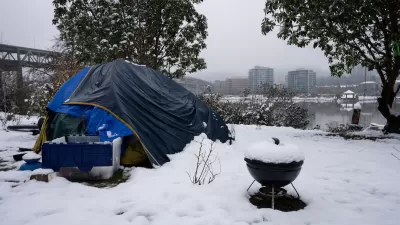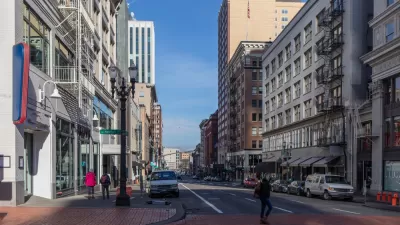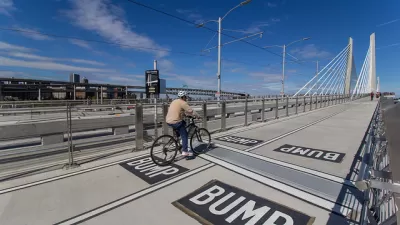Car registration statistics from Multnomah County show passenger vehicle ownership is less popular among its growing number of residents. The residents forgoing cars have done themselves a favor in more ways than one.

Michael Anderson has written a pair of posts to calculate the effect of reduced car ownership in Portland, Oregon. According to the premise of both articles, about 38,501 additional cars would be on the road in Portland if residents owned cars at the same rate as in 2007.
The first post, published in June, calculated and visualized the amount of space the reduced car ownership gains the city. For that record, "that’s everything between NE Killingsworth, Skidmore, Rodney and 16th," or "it’s the entire Foster-Powell neighborhood west of SE 73rd Avenue," among other large swaths of the city.
Andersen's newest post focuses on "the money that isn’t being spent to move, maintain, insure and replace all those cars." For each of the 38,501 cars, Andersen calculates a savings in insurance, purchase, and taxes and fees to produce a "very low estimate of direct car ownership costs per year" totaling $2,178. "So just by not owning 38,501 cars that they would have owned in 2007, Multnomah County residents are saving $83,855,178 each year to spend on other things instead," concludes Andersen.
Andersen the imagines a wish list of big ticket items that could be paid for with the money saved on reduced car-related spending, including eliminating tuition at Portland Community College, building out the entire bike plan for the city, or nearly eliminating fares on the TriMet transit system.
FULL STORY: Portland’s drop in car use frees up $138 million in our local economy every year

Alabama: Trump Terminates Settlements for Black Communities Harmed By Raw Sewage
Trump deemed the landmark civil rights agreement “illegal DEI and environmental justice policy.”

Planetizen Federal Action Tracker
A weekly monitor of how Trump’s orders and actions are impacting planners and planning in America.

The 120 Year Old Tiny Home Villages That Sheltered San Francisco’s Earthquake Refugees
More than a century ago, San Francisco mobilized to house thousands of residents displaced by the 1906 earthquake. Could their strategy offer a model for the present?

In Both Crashes and Crime, Public Transportation is Far Safer than Driving
Contrary to popular assumptions, public transportation has far lower crash and crime rates than automobile travel. For safer communities, improve and encourage transit travel.

Report: Zoning Reforms Should Complement Nashville’s Ambitious Transit Plan
Without reform, restrictive zoning codes will limit the impact of the city’s planned transit expansion and could exclude some of the residents who depend on transit the most.

Judge Orders Release of Frozen IRA, IIJA Funding
The decision is a victory for environmental groups who charged that freezing funds for critical infrastructure and disaster response programs caused “real and irreparable harm” to communities.
Urban Design for Planners 1: Software Tools
This six-course series explores essential urban design concepts using open source software and equips planners with the tools they need to participate fully in the urban design process.
Planning for Universal Design
Learn the tools for implementing Universal Design in planning regulations.
Clanton & Associates, Inc.
Jessamine County Fiscal Court
Institute for Housing and Urban Development Studies (IHS)
City of Grandview
Harvard GSD Executive Education
Toledo-Lucas County Plan Commissions
Salt Lake City
NYU Wagner Graduate School of Public Service





























